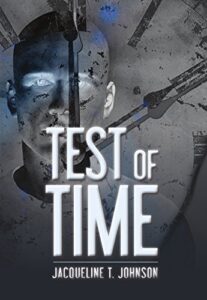Today, Feathered Quill reviewer Amy Lignor is talking with Deborah Stevenson, author of
An Armadillo On My Pillow.FQ: Deborah, you do so much, from fiction to non-fiction to prose, etc. – do you have a personal favorite when it comes to writing?
STEVENSON: I enjoy all of it. I probably lean toward fiction, but often it is based on real life. As for prose or verse, I try to let the story choose. Some lend themselves better to prose. Others to verse. Verse is almost like a word puzzle—finding just the right words, rhythms and rhymes. It’s also challenging—you have to make sure the words progress the story. There is a tendency for the words to take on a life of their own otherwise. It’s a fun challenge, and I think an added layer of fun for readers when done well.
FQ: Your books are very empowering, and certainly something children need nowadays. Where do the original ideas come from? Do these creative ideas come from watching the state of the world on the news, or the issues you see in society, etc. that you wish to address?
STEVENSON: Thank you so much. Empowering children is a key motivation for my writing, and I appreciate your affirmation that I’m accomplishing that goal.
Current events certainly prompt stories. For example, Oy, Elephants! (about circus elephants who retire to a human Florida retirement community) was inspired by the news that Barnum and Bailey was allowing their circus elephants to retire. The Last Rhino was inspired by the real life crisis facing the world’s rhino population due to poaching. The Green Woolen Fedora (coming out in April) was inspired by the emotionally charged separation of grandparents and grandchildren during the pandemic.
Many stories are inspired by my personal experiences. Soaring Soren is the true story of my beloved French Bulldog, who had many inspirational messages to share with children about determination and never giving in to perceived limitations. Pugs Wearing Parkas is based on two hilarious, little pugs in my neighborhood who would run out in their parkas and terrorize my doberman on walks.
Other stories are purely imagination, and often come to me in dreams. The funniest example is the Chicken and Egg series. I dreamed FOUR books in one night. I woke up at 1 AM with all four in my head, went downstairs and frantically wrote for 12 hours straight, trying to get them all down before I forgot them.
FQ: Your thoughts and stories certainly inspire creativity in children, as well. Do you have children of your own, or were you perhaps a teacher surrounded by young readers? Did they inspire you?
STEVENSON: I have a son. He’s grown now, but when he was little we read together every day, and often spent joyful afternoons in the library reading and researching animals and other topics. I adored seeing books through his eyes. Reading opens up wondrous worlds and new ways of thinking. My interest in writing for children definitely was sparked by that experience with my own son, as well as by my own love of reading as a kid.
I love to do school visits for my books and find the kids are so inspirational. They absorb positive messages like little sponges, in such a simple and lovely way: kindness, caring for other people and creatures, bravery, overcoming obstacles, and supporting each other. It is rejuvenating to see how much they care and want to help create a better world. As a society, we need to nurture and grow those natural inclinations. I hope my books can play a part in that.
FQ: Where did the idea for Armadillo come from? Do you remember when the thought struck you, so to speak?
STEVENSON: Armadillo was one of those ideas that came to me in a dream. It combines two of my favorite things: animals and imagination. I hoped to introduce children to some lesser-known animals in a fun, imaginative way, that would also be educational.
I also hoped the book would showcase Morgan’s incredible talent for portraying endearing animals in expressive, fun ways. It did, and she went to town in this book. The art couldn’t be cuter or more fun.
There’s an activity book on my website that children/teachers can use to study about animals, and to create their very own imaginary animals that are adapted to their very own imaginary habitats. It is free, educational, and fun, so please check it out: www.frogprincebooks.net/classroom
FQ: Have you always had the same illustrator? I must say, Morgan Spicer did an incredible job. Is there a certain ‘partnership’ that you feel needs to be formed between author and illustrator in order for a book to truly work?
STEVENSON: Morgan and I have done five books together so far and I’m her biggest fan. A picture book truly tells a story in BOTH words and pictures, and so a strong, creative collaboration between author and illustrator definitely adds to the book. It is possible for author and illustrator to work separately. It’s often the case in traditional publishing. But that partnership is one of my favorite parts of the creative process. My interaction with Morgan adds so much to our books. One of us will have an idea, the other adds to it, and that back and forth has taken us in some amazing, unexpected directions.
I do have two other illustrators I work with...David Stedmond from Ireland illustrates the Chicken and Egg book series. His very expressive, comical, cartoon-y style suits these books perfectly and he’s done a fantastic job. Stella Mongodi is an Italian illustrator who lives in the UK. She has a fine-art, feathery, dreamy style that was perfect for my upcoming book, The Green Woolen Fedora. She just finished the art for the book and it is gorgeous. She really nailed it and she adds in many fun, creative details that children and grown ups will enjoy discovering.
I could go on and on about these incredibly talented illustrators, but I’ll just say I’m in awe of their creativity and blessed to work with them.
FQ: This book, as well as the adorable Pugs Wearing Parkas and others, all have that animal theme. And, I must say, the illustrations are hilarious – do animals play a big role in your own personal life?
STEVENSON: Absolutely! I have always been a huge animal lover, and so it’s a special treat to win the We Love Animals award.
When my son was young we had a lot of unusual pets: chinchillas, a hedgehog, a few different lizards, fish, a gerbil. We also had cats and dogs. I love all animals, but have a special affinity for dogs. In my spare time 😉 I train dogs (my own and other people’s) for the sport of dog agility. Agility is intense, detailed communication at high speed, and highlights the incredible connection that is possible between humans and canines. I confess I am addicted to it.
I try to support wildlife conservation efforts. So many amazing creatures are threatened if we do not do something to change the current trajectory. It would be heartbreaking to think that future generations might never know them, except in books. And perhaps, even more alarming, their fate predicts our own in many respects. In my efforts to help wildlife, I also have an “adopted” rhino, but it’s symbolic...he doesn’t live here. This is a great activity for home or classroom and a lovely way to connect with conservation efforts and wildlife.
FQ: What are your hopes when it comes to the younger generation and reading? It seems like everything is about a computer and no one wants to teach the power of books anymore; is there any advice you would give to kids out there who may want to write one day?
A driving force in my writing is encouraging children to love reading. It opens up worlds and minds, inspires dreams and imagination, and reminds us that life is about perpetual learning. Whether it’s a paper book or a computer, that curiosity that moves us to keep learning is the greatest gift we can impart on our kids. In a world where we seem ever more divided, reading connects us to those who are different from us, and helps us understand the deeper, important ways we are all alike.
To children interested in writing, three words: READ and WRITE!
We learn about writing by reading. And we improve our craft by writing. Writing is difficult, but never get discouraged. The more you write, the better you’ll get.
It is human nature to want an outlet to define, organize and communicate our feelings on things that matter to us. Writing is so rewarding because it enables us to do just that…to touch others in meaningful ways.
FQ: Can you tell us what we can all look forward to next when it comes to your amazing writing in 2021?
STEVENSON: Always lots of irons in the fire. The Green Woolen Fedora is next up, coming out in early April. I invite folks to check out the book trailer here: www.youtube.com/watch?v=uXF5VLXTbiA
It’s a sweet, sentimental, funny story about the joy of true friendship and the power of remembrance. The art is magical and the messages timely. It’s a story for all children age 3 and up, but will resonate especially with children who are apart from or have lost a loved one.
After that is Book 3 in the Chicken and Egg series: Do Chickens Have Lips? Illustrations are in progress now, and the story is as silly and fun as could be. I hope it will provide some giggles for kids and parents during what has been a stressful time.
And perhaps the pugs will be making a comeback, in new outfits (it’s a surprise) and this time instead of seasons, teaching us a little about time.
I also just finalized a manuscript that is one of my all time favorites. Not ready to give it away yet, but I adore the premise and the main character and I hope children will too.
FQ: Thank you. Congratulations on the award; you certainly deserve it. And my granddaughter just absolutely LOVES your books!
STEVENSON: Thank you so much. I’m thrilled your granddaughter loves my books! That warms my heart. And I am thrilled that Armadillo won the We Love Animals award, because it is truly a book about loving and appreciating animals.
I enjoyed pondering your thoughtful questions, and the chance to share a bit about myself and my work with your readers. Thank you for all the important, valuable opportunities Feathered Quill provides to help authors and readers connect.





































